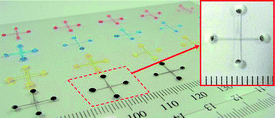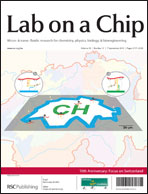Capillary driven low-cost V-groove microfluidic device with high sample transport efficiency†
Abstract
In this study we investigate the liquid sample delivery speed and the efficiency of microfluidic channels for low-cost and low-volume diagnostic devices driven only by capillary forces. We select open, non-porous surface grooves with a


 Please wait while we load your content...
Please wait while we load your content...